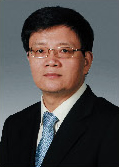The topic:
Environmental
concerns and sustainable development call for a new generation of
energy-conversion technologies to replace the existing fossil-fuel,
combustion-based energy systems. Due to their inherent advantages, such
as high efficiency and low/zero emission, fuel cells have become one of
the most attractive energy-conversion technologies. Hydrogen is the
cleanest and most efficient fuel for fuel cells. However, the
widespread commercialization of hydrogen-fed fuel cells is limited by
the significant challenges in the production, transportation and
storage of pure hydrogen. Liquid methanol is an ideal alternative to
hydrogen. This hydrogen-rich fuel offers multiple advantages over pure
hydrogen, including higher energy density and ease of transport,
storage and handling. For this reason, interest in developing direct
methanol fuel cells (DMFCs) has grown rapidly all over the world in the
past decade.
One of the key challenges to the widespread
commercialization of this type of fuel cell, however, is its low power density. In addition
to
the sluggish electrochemical oxidation of methanol and the methanol
crossover problem, two challenging problems lead to low power densities
in
conventional DMFCs. One is the cell’s inability to handle the crossing
over of excess water that evolves during fuel cell operation to the
cathode. The other is that conventional designs render too much heat
loss, resulting in a rather low cell operating temperature. Solving
these two problems requires extra attention to be given to thermal and
water management.
A model car powered by our prototype micro-DMFC
Methodology used:
In this project, we set
about solving the abovementioned problems. First, we designed and
fabricated a prototype micro-DMFC using microelectromechanical system
techniques. The micro-DMFC not only facilitates the effective removal
of water from the cathode, but also provides a higher cell operating
temperature. We then developed a theoretical model that incorporates
the effects of coupled heat and mass transfer, and electrochemical
kinetics as a simple but robust tool for the design and optimization of
the passive micro- DMFC. Finally, we investigated theoretically and
experimentally its heat and mass transfer behavior.
|
|
 |
Prof Tianshou Zhao
|
Key findings and implications:
A New Type of Fuel Cell: We have developed a new type of DMFC that requires neither liquid pumps nor gas compressors. This type
of passively operated fuel cell can achieve a maximum power density of
about 30 mW/cm2, which is the highest performance reported in the open
literature. This work has been published in Electrochemistry
Communications, one of the most prestigious journals in the field of
fuel cells. The paper has been awarded the Most Cited Article Award of
the Journal. In addition, since this type of DMFC is the most
competitive candidate to replace conventional batteries, the prototype
was the subject of a feature article in Fuel Cells Bulletin (ISSN 1464-
2859, February 2005), an international newsletter that publishes
technical and business news for the worldwide fuel cells sector.
A New Hydrogen Generation Technique:
According to conventional wisdom, the DMFC is an electrochemical device
that generates electricity. However, we recently discovered that
hydrogen can evolve spontaneously from the DMFC. We proposed a theory
that predicts the peculiar phenomenon of hydrogen evolution. This work
has been published in Electrochemical and Solid-State Letters , a
top-rated electrochemistry journal. This discovery has led to a new
technique for producing hydrogen at room temperature without the
emission of carbon monoxide species which is common with conventional
methanol-reforming technologies. In addition, the discovery of hydrogen
evolution in the DMFC has led to many other inventions in our lab, for
example, a new method to activate DMFCs (Electrochemical and
Solid-State Letters 8 A549-A553, 2005), a new method for measuring the
rate of methanol crossover (Journal of The Electrochemical Society 152
(11) A2238-A2245, 2005), and an accurate method for measuring the
electric potential of anodes and cathodes (Electrochemical and
Solid-State Letters 8 A211-A214, 2005).
Prof Tianshou ZHAO
Department of Mechanical Engineering
The Hong Kong University of
Science and Technology
metzhao@ust.hk
|
